#aluminium radiators
Explore tagged Tumblr posts
Text

Keep the heat out with our lightweight, strong, and reliable aluminium radiator cores. DM us to know more about our services.
For more details, Call: +91 9909288407 Visit: http://www.fthindustries.in/
#Aluminium Radiator Cores#radiator manufacturer#radiator core supplier#car radiator supplier#radiator cores manufacturer#FTH Industries
1 note
·
View note
Text
Things to consider for Buying the Best Luxurious Electric Towel Radiators
Bathroom radiators were considered status symbols previously, but in present days, it becomes a necessity for mostly all homes and bathrooms in the UK. Hence, selecting the radiators for your bathroom, home, or kitchen, you need to make a careful selection.
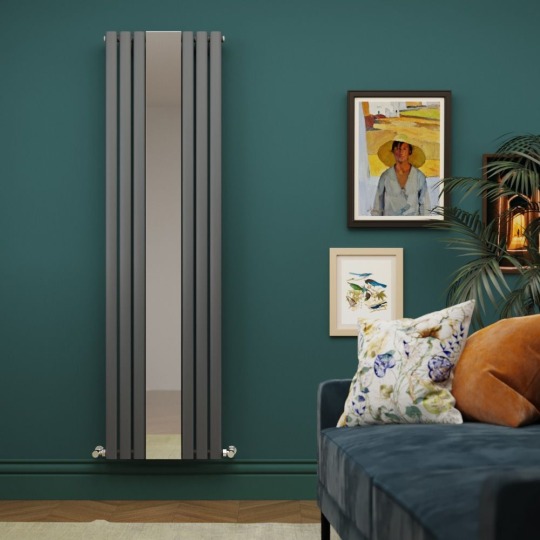
The reason for choosing the best brand, type, and size of radiator is necessary as it helps in saves your large energy bills, quickly heat your room, keep your towel warm, and gives a contemporary touch to your home.
In addition, you should consider several important factors before finalizing your selection. The factors include radiator type, BTU requirement, fuel type, and suitable valve. Remember, rooms with high ceilings require more power to heat the room.
You can choose contemporary electric heated towel radiators or Traditional Column Radiators for your modern or classic bathroom in the UK.
With increasing needs for radiators, you will have great options to buy the best radiators, such as Reina Luxury Designer Aluminium Electric Towel Radiator.
There is a wide range of radiators available in the market, like Designer heated towel rails, Mirrored towel rails, Ladder Electric Heated Towel Warmers, Central heating designer heated towel rails, Vertical Designer towel rails, electrically heated towel rails, designer radiators, vintage column radiators0, and several others.

Selecting electric towel radiators, central heating radiators, or dual fuel radiators depends on the existing heating system. You can select central heating radiators if you have a central heating system in your home. But if you are looking for an energy-efficient heating solution, electric towel radiators are the best choice.
It drastically saves your energy bills and quickly heats your room; hence you don’t need to wait longer to make your room warm and cozy. Furthermore, you can easily use it on summer days without consuming extra energy bills.
Choose the best brand of radiators, towel rails, or warmer such as Burlington heated towel rails, DQ heating towel warmers, Redroom, Bayswater, Burlington traditional radiators, etc.
Choosing towel rails or radiators depends on your room type. For your kitchen, living room, or hallways, designer radiators work efficiently while for your en-suite or bathroom, you can choose heated towel rails or warmer. You will get different colors and finishes to choose the radiators that best suit your home interiors.
You need efficient thermal heat in the room that you utilize most. Those rooms, which you use occasionally require less heating while places like a bathroom require sufficient heating.
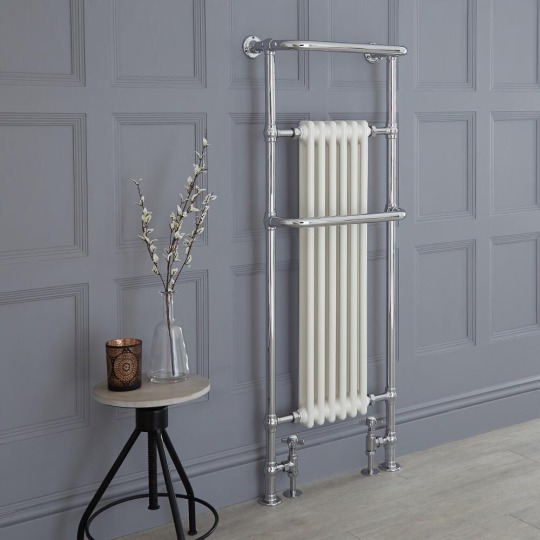
Choosing the size and wattage of your luxury electric towel radiators depends on your room size, insulation quality, and property location. Using a BTU calculator, you can measure the exact requirement of power output, and based on that you can determine the size of radiators. Always keep sufficient heating capacity when choosing the radiators. With less heating power, your radiator takes more time to heat your room, which raise your electricity bills.
In addition, electric radiators are easy to install. They can quickly install and do not require any plumbing work. The fitting process is faster, cheaper, and less troublesome than central heating. Take the help of an experienced electrician to install luxury electric radiators in your bathroom. Normally, if you have a small bathroom, wet room, or shower room, it is not recommended to install electric radiators in such a small area to prevent any hazards. For that, you can go for Electrically heated towel rails, Designer Heated Towel Rails, or Luxury modern electric heated towel rails.
The key benefit of an electric radiator is that they require less maintenance. They don’t produce carbon monoxide as they don’t require fuel-burning elements.
They don’t need any safety checks, which are essential in fuel-based central heating systems. Thus, if you are looking for an ideal and secure heating solution, electric radiators & towel heating rails are best options.
Electricity can be generated by all renewable power sources, hence, obviously, they become eco-friendly options and can also work using green energy, such as solar panels, hydropower, or wind turbine. With an energy-efficient heating system, you will get the best heating solution for your home using less energy.

Call us at 0333 772 2055 to buy the best brand of luxury electric towel radiators from Designer Radiator Concepts. If you are looking for Designer Electric Towel Radiator deals or Traditional electric heated towel radiator deals, Designer Bathroom Concepts offers the best offers on Reina Luxury Designer Aluminium Electric Towel Radiator, heated Burlington heated towel rails, DQ heating towel warmers, Redroom, Bayswater, Burlington traditional radiators, and many others.
0 notes
Text
Aluminium Radiator In The United Kingdom - Budget Radiatorsthe
We have a fantastic range of budget radiators to suit every style and size. Choose from Aluminium radiators, Stainless steel, Cast iron and more. We also offer a range of radiators on the wall for super-convenient heating!
0 notes
Text

Paint it Black! Making one of the first titanium airplanes was difficult .
Titanium was corrugated to make room for expansion when the titanium heated up at top speed of 2200+ mph. The skin panels were fastened to the underlying structure with oblong holes which would allow the skin to expand and contract without the fasteners causing buckling. And the skin over the wing was also corrugated to prevent warping during expansion, this is actually quite noticeable, you can see the sections that are corrugated quite clearly here in this artistic photo.
Titanium makes up 93% of the SR 71 structure. It’s strength to weight ratio, or specific strength, is better than Aluminium. Yet today very little titanium is used in everyday objects. Planes primarily use aluminum, not titanium.. why is it not used?
The development of the A-12 the Skunk Works, a small division of Lockheed discovered that making the blackbird out of titanium was going to be anything but easy
Titanium is expensive because its refinement process is a nightmare. To make Titanium, we start with a feedstock in the form of Titanium Dioxide, with this chemical formula. This oxide ore called rutile can be found in high concentrations in dark sandy soils.
Build the SR-71 the US needed to buy vast quantities of the mineral from the Soviets. To do this they purchased the material through ghost organizations to hide the final destination of the material. One of the companies that were made up was a company to make pizza ovens supposedly… the Russians believed this story!
Had the Soviets known what they were helping build, they would not have sold the material. However, the US likely could have just purchased the material from mines in Australia. This is a relatively common raw material and is primarily used as a white pigment for paints and is even found in sunscreen lotion as ultraviolet radiation blocking pigment.
The primary titanium alloy used in the SR-71 was thirteen percent vanadium, eleven percent chromium, and three percent aluminum. Both Chromium and Aluminium form thermally stable oxide layers on the outer skin of the metal. Which prevents oxygen from diffusing further into the metal and causing it to become more brittle.
Which raises the max operating temperature of the metal!
Vanadium acts as a stabilizer for a crystal structure referred to as the beta phase. This leads to a material with higher tensile strength and better formability. Through trial and error and problems that were solved by the geniuses that worked at the Skunk Works. They discovered that their cadmium plated tools were leaving trace amounts of cadmium on bolts, which would cause galvanic corrosion and cause the bolts to fail. This discovery led to all cadmium tools to be removed from the workshop.
This article just proves what we already know today when people work together and work hard to solve problems. New ground was broken with the formulation of titanium that led to the success of the SR 71 and the tremendous heat and strength that this magnificent airplane needed.
As Ben Rich head engineer and later, he replaced Kelly Johnson as the head skunk said in his book called the Skunk Works. ‘’I volunteered some unsolicited advice about how we could use a softer titanium that began to lose its strength at 550° to paint the airplane black
From my college things I remember that good heat absorber was also a good heat emitter it would actually radiate away more heat then it would absorb through thick friction. I calculated the black paint would lowered the wing temperature 35° by radiation think of how much easier it will be to build an airplane using softer titanium.
It was my father Butch Sheffield’s boss Ben Rich, who saved the Blackbird program time and money, with his idea of painting it black.
wisconsinmetaltech.com/titanium-and-t… is my Source and SkunkWorks by Ben Rich
Linda Sheffield
@Habubrats71 via X
#sr 71#sr71#sr 71 blackbird#aircraft#usaf#lockheed aviation#skunkworks#aviation#mach3+#habu#reconnaissance#cold war aircraft
36 notes
·
View notes
Photo






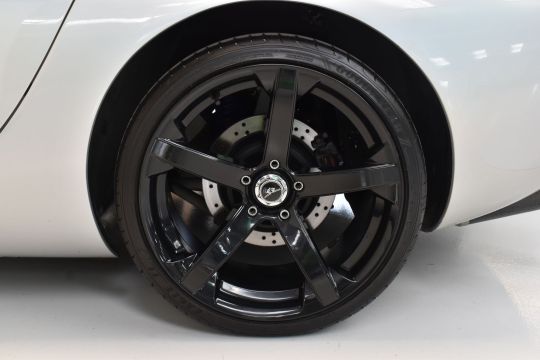



TVR Tuscan 2S
First released in 1999 and manufactured up until 2006 the TVR Tuscan was available in various specifications with varying performance. Being a 2S the car is fitted with the 4 liter Speed-Six TVR engine and revised suspension for increased handling performance. A full engine rebuild was completed resulting in a reliable smooth engine that produces just north of 400BHP. The completed work includes -Syvecs engine management system -Aluminium radiator -FFF EVO2 cylinder head -Billet crankshaft -H section conrods -Up-rated cylinder block -Simplex timing sprockets and chain -Modified half time bearing -New piston rings and bearings -Lightened flywheel -New clutch -Race proven clutch slave cylinder -De-cat exhaust -SC engine mounts -AST suspension -Suspension poly bush kit -Silicone hoses This work completed ensures that this TVR is not only fabulous to drive but most importantly reliable.
200 notes
·
View notes
Text
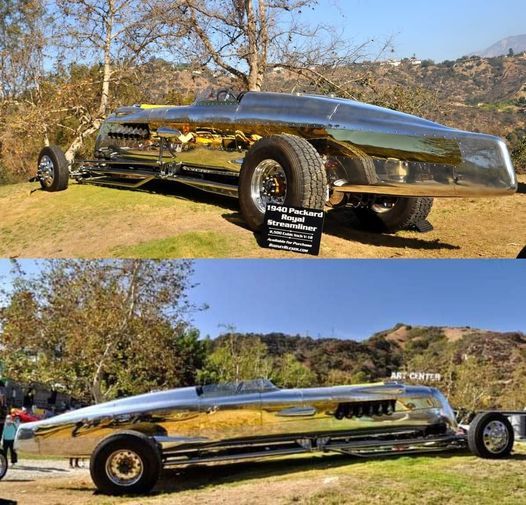
1940 Packard Royal Streamliner
So you thought Jay Leno's Tank Car aka Blastolene Special was big and brutal? Think again, because Rodney Rucker just took it a step further with the 1940 Packard Royal Streamliner.
The Packard Royal Streamliner is a vehicle that has undergone extraordinary customization process. How not, the car is supported by a powerful engine taken from a patrol motor torpedo boat. And reportedly, the boat was used in World War II. The Packard Royal Streamliner powered by an insane V12 engine 1,600 horsepower and 3,000 ft-lb of torque. As a boat engine it turns opposite to land engines so the car has two transmissions and drivelines to get the correct rotation for street use. The other challenge with a boat motor is….. cooling. No longer having an ocean of coolant available the car was designed with 4 radiators and six cooling fans. See the shape, the vehicle is fairly long, which is 9.75 meters. The shape resembles a rocket ready for speed. This car is wrapped with a aluminium, chrome and brass mix.
28 notes
·
View notes
Text

C63 AMG Coupé Black Series "The Dark Side Of Mercedes-AMG".
Back in the days the C63 AMG Black Series includes an upgraded version of the legendary M156 6.2L n/a V8 engine rated by 517hp and 620Nm of torque. A black diffuser insert from the SLS AMG GT3, chromed twin tailpipes, AMG sports suspension with AMG rear axle differential lock, three-stage ESP, two AMG sports bucket seats, black DINAMICA microfibre upholstery on the centre panels of the seats and doors, omission of the rear bench seat (single rear seats available as option).
AMG performance steering wheel in nappa leather/DINAMICA microfibre, steering wheel rim featuring flattened top and bottom sections has aluminium shift paddles for manual gear changes, red seat belts and red contrasting top stitching on the steering wheel, on the seats, door centre panels, armrests on the doors, the centre console and on the shift lever gaiter, three autonomous round dials has a three-dimensional TFT colour display.
The AMG Track Package includes 255/35 R 19 front and 285/30 R 19 rear sports tyres from Dunlop, active rear-axle transmission cooling with radiator in the rear apron.
The AMG Aerodynamics package includes carbon fibre flics on front apron, carbon-fibre functionally tuned front splitter, fixed carbon-fibre rear aerofoil with an adjustable blade.
Mercedes-AMG One man, one engine Handcrafted by Michael Kübler @f1mike28 in Germany Affalterbach. Driving Performance is our Passion! Mercedes-AMG the Performance and Sports Car Brand from Mercedes-Benz. Mercedes-AMG Handcrafted by Racers.
The Black Series projects from Mercedes-AMG are limited, unique and very rare. Keep your eyes open because you will see them only for a few seconds.
#amg#cclass#c63amgblackseries#c63blackseries#c63amg#c63#blackseries#mercedesamg#mercedes#mercedesbenz#affalterbach#onemanoneengine
17 notes
·
View notes
Text
So, there's many of you now. I know we're in the How Sweet It Is Not To Know Follower Counts website and I do cherish that, but still, more people than ever in my life clicked a button that in some capacity says "I care what this dork has to tell me" and I want to acknowledge and celebrate that - especially now that this growth seems to have settled into its rhythm.

Spot when @identifying-cars-in-posts reblogged my pinned, lol.
So, for my 100th post, I felt like celebrating our love for reaching round numbers. And little in the automotive world represents it more iconically than what reigned supreme above all cars in the 1980s.
Porsche started out as an engineering firm, whose most notable contract was what would become known as the Volkswagen Beetle (and boy what a story that is). The first car of its own was the 356 seen below - a sporty body laid over Beetle underpinnings and thus still mostly made by Volkswagen. But by God, they were going to run with that recipe and perfect it 'til the sun burst.
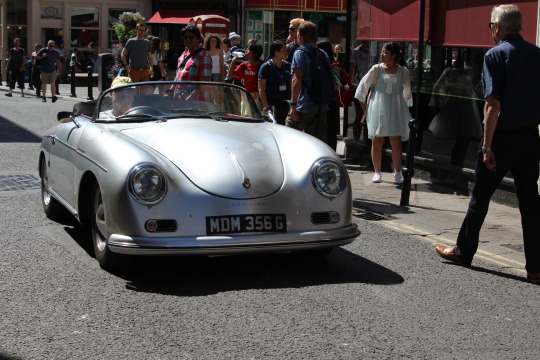
Meanwhile, in England, a chap called Colin Chapman decides the next of his company's track cars will actually be drivable on the street, to need no trailer to go race. Thus the Lotus Seven is born and sold in kit, which avoids high taxes on the exporting of cars to the US (but those taxes would have remained had they been sold with assembly manuals… so they were sold with disassembly manuals for you to read backwards. No, seriously.).
The Porsche 356 kept getting less and less Volkswagen and more and more Porsche until in 1964, the year of the Beatles, the year of the Stones, the stone-age Beetle was left behind for good with the Porsche 911 (seen below), a blank-canvas take on the same recipe of an air-cooled rear boxer engine powering the rear wheels of a squished-Beetle-shaped sportscar. 'Twas good.
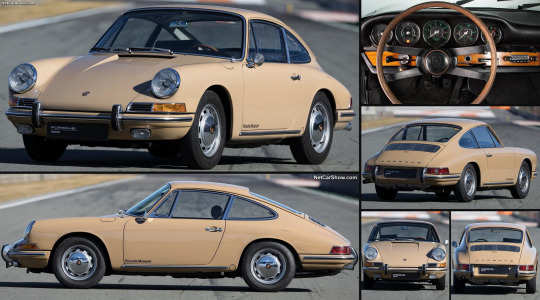
In 1973, Lotus was doing pretty well for itself. The Seven's whole 2500 sales had carried it through producing a number of other models, and a few were even in production concurrently - a lineup! Exciting stuff! Well, that and an F1 team so successful its Wikipedia page features the section "Domination in the 60s and '70s". The exciting opportunity to move upmarket, with bigger models with AC and automatics and all that bougie shit, pushed them to move away from the image of scruffy old kit car makers, ceding the Seven's production to the last two dealers that sold it, main one being Caterham Cars.
The 911 headed into the 80s old enough to drive, and Porsche's plans considered it at the end of the line, with staff already mourning it. But then the yankee at his third week as CEO saw those plans (which to Germans are basically scripture), said "to hell with that" and extended that line off the chart. Literally. He went to the lead engineer's office and physically took a marker at a development chart. They all secretly liked that.
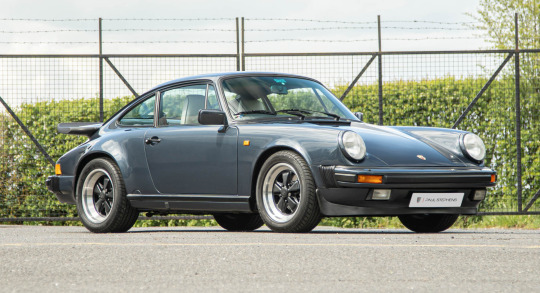
Still, it was clear the game was changing - intercoolers, all wheel drive, active suspension... how hard could the 911 layout go if it didn't stick to its simple air-cooled roots? Well, Porsche resolved to find out by filling it with the cusp of automotive advancements and then some. And I do mean filling - a chassis that didn't even need space for a radiator was suddenly tasked with storing it, two turbos, two intercoolers, and a good half dozen oil pumps.

Yeah good luck with that, buddy. Oh, and materials? The body was kevlar, the frame was aluminium, the floor was Nomex (ever even heard of Nomex???), the wheels were magnesium and the spokes were hollow!!!! You could blow into the spokes!!! And don't get me started on the technology! Variable height, an all-wheel-drive system that distributed torque at will, electronics galore... As you may be able to guess, development was… complex.
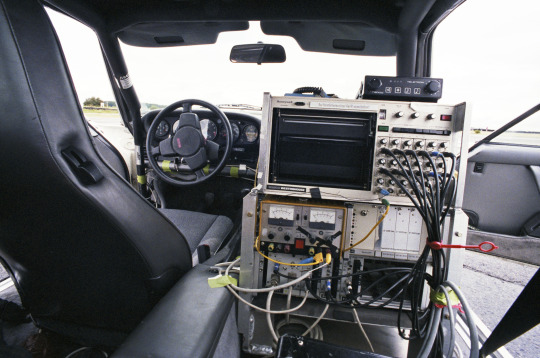
At one point a test driver was doing 180km/h (112mph) to go get the car un-on-fire-d, and that's just one of the plenty horror stories. Hell, work started in 1983 to create a car for Group B and took so long that when said rally series died in 1986, production was just starting. Not that development would stop at the start of production, either - the first cars just got updated when the owners took them in for their service. (Can't blame them, I fix wording in weeks-old posts...) But however long it took, the resulting Porsche 959 answered the originating question "How hard can this chassis go?" with a resounding "Hard and then some".
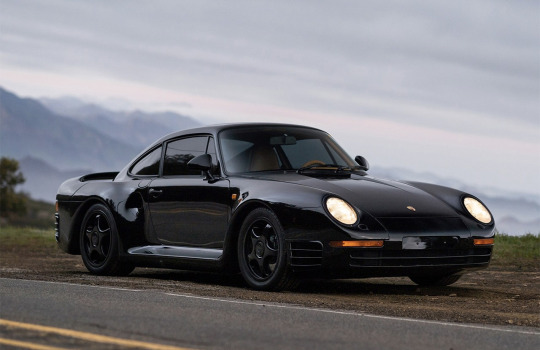
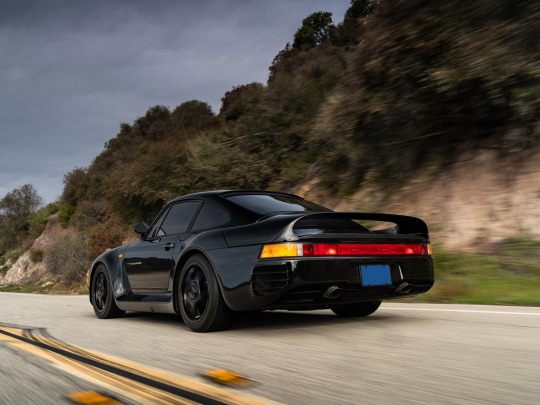
It was comfortable and refined enough to be driven every day, but so capable it extended the limits of the concept of production car. Put it this way: it reached car people's favorite round number, 100km/h (to yankee doodles, 60mph) in 3.6 seconds. The second fastest production car did so in 4.6. That's one second of margin in a race that ends in five. Oh, and if you want to put it another way: the 959 was the first production car to ever surpass 300km/h, let alone come 1 shy of the mythical 200mph (322km/h).
Meanwhile, the handful of chaps at Caterham was still producing the Caterham Seven. It's the Lotus Seven (specifically the third revision, from 1968), but I guess in '83 the engine changed. We were saying?
They couldn't sell the 959 stateside for lack of crash test data, and America's ban on importing foreign cars under 25 years of age had no exception. That is, until Bill Gates wanted a 959 so bad he spent 13 years getting an exception passed. That's how hot this car is.
And yet, this record-breaking, boundary-pushing, master-of-all-trades hypercar sits atop the 80s automotive landscape engulfed in shadow. But how? Why? Because it failed to contend with the greatest automotive headache: humans. It was planted, practical, reliable, predictable - docile, domesticated, amicable. Perfect. But these are not meant to be cars, they're meant to be posters. And you don't get posters of what is perfect, but of what excites you. And what excites us is the visceral, the raw, the uncompromising - the wild, the feral, the dangerous. And, of course, reaching round numbers. What excites us is a lot more like the first production car to break 200mph, the Ferrari F40.
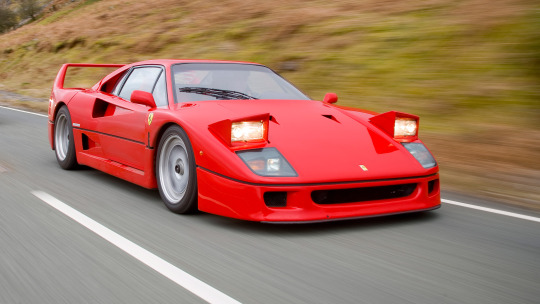

Remember how the 959 was being developed for Group B racing and then the series died? Well, Ferrari got screwed over too, with the 288 GTO Evoluzione they were developing (seen here to the right of the base 288 GTO) suddenly having no reason to be.


The lead engineer then asked Enzo Ferrari to let him turn that weekend project (literally, they couldn't spend work week time on it) into a road car to celebrate their 40 years. Enzo, nearing the end of his days, thought "Ah, what the hell, let's leave with a bang", so they set off to build what would become the anti-959. Not anti as in response, but as in antithesis. Where the 959 was an attempt to modernize the noisy, unrefined, old-school 911 -to make a supercar "tested for everyday usability to the most strenuous standards", by Porsche's words- the F40 was a reaction to, per Ferrari's words, "customers saying Ferraris were becoming too plush and comfortable": "nothing but sheer performance. Not a laboratory for the future, as the 959 is. Not Star Wars."
To exemplify: left is the 959 - note the leather and electric seats, right is the F40, note the string you open the door with.
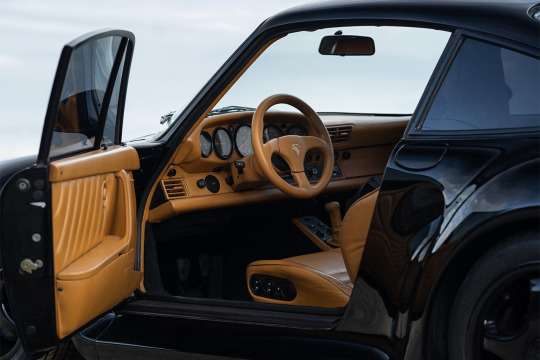

The F40 was noisy, crashy, torrid, and the turbo lag painstakingly smoothed out in the 959 here kicked you in the back like a locked door. It would rip your head off the moment it sensed you didn't know what you were doing. But it was more exciting - to look at, to hear, to drive. And that's what won people over - including the buyers, which were near four times as many as Porsche's despite the price tag being double.
Had the 959 lost then? Well, not quite. Enter the 959 S. Doing away with much of the 959's luxuries, like adjustable suspension, electric windows, AC, central locking, and even backsea- wait, the 959 had BACKSEATS???? Holy FUCK why does no one talk about that??? Take the family on a trip to 300kphville! I was saying. They schlapped some bigger turbos on too and power went from 444hp right past the F40's 470hp to a healthy 508, that propelled it over what any roadgoing F40 ever managed at 211mph, or 339km/h. Presumably for bragging rights.
And I want to stress, these were titans clashing here. This was leagues beyond what other production cars could even comprehend. Again, the 959 hit 100km/h in 3.6 seconds. The F40 held a record by taking less than 16 seconds to go from 0 to 160km/h(100mph) and back to 0. This was witnessing superhumans fighting through the clouds.
And then in 1992, the two chaps that 'developed' Caterhams (i.e. banged new ones together in the shed) told the chap they worked for "Hey, let's make one that's really barebones and fast", rang up their ol' mate (and ex-F1 racer) Jonathan Palmer to ask to lend a hand, and bought some of the 250hp engine that powered the Vauxhall (British for Opel) Cavalier GSi in the British Touring Car Championship.
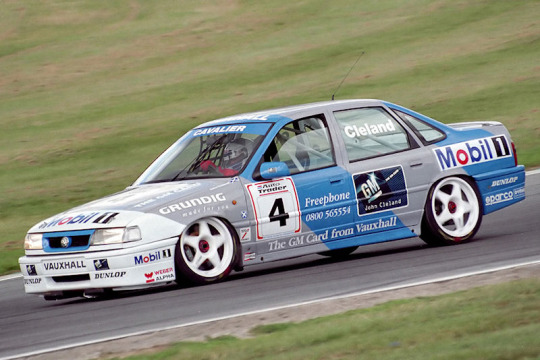
Thus, the Caterham Seven Jonathan Palmer Evolution - a raw, uncomfortable, uncompromising beast that went fast as all fuck. Now, if you don't know Sevens you may think "Ah, so just like the F40, what with its handcrank windows and the string to open the doorlatch and all". And to illustrate how far off that is: in the Seven the windows were sown on and you latched the door yourself with a press button.
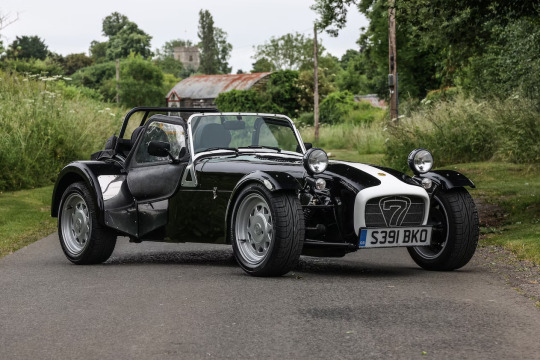
And that's the standard version which had windows and doors. The JPE didn't.
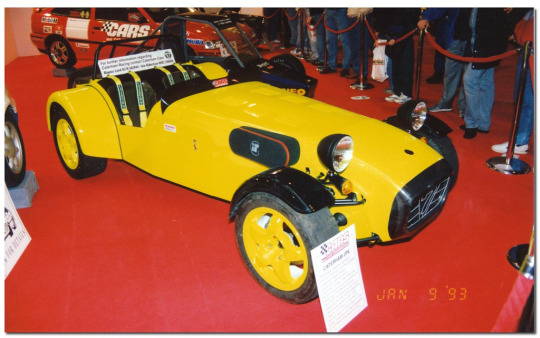
The JPE had a carbon tub you were meant to call a seat, the controls, a rev counter and a tach that didn't even bother reading until 30mph, and fuck you. And this one is not even as barebones as the JPE got: this one is painted.
So while the F40 went from 1,250kg (2760lb) to 1370kg (3020lb) when adjusted to comply with US regulations and the 959 went from 1450kg (3200lb) to the lightweight S version's 1350kg (2975lb), the Seven JPE weighed 1170. As in 1170lb. 530kg. Read that again if you need to, but it had about half the power of those two and considerably less than half the car to move. And so, in January 1993, this thing -this '50s coffin with a Vauxhall engine banged together by one guy in a shed- took the Guinness World Record for fastest car to 100km/h with a time of 3.46 seconds - and the 0-160km/h-0 record with 13.1 seconds. Close your eyes and picture that.
Yet the Seven JPE is hardly known to anyone but the most hardcore of enthusiasts, and owned by barely four dozens of 'em. So did it, perhaps, ultimately lose? Not at all. In fact, none of these cars did.
Every 959 cost Porsche twice what they sold it for, but the project proved the 911's layout could stand the test of time, and its development gave Porsche technologies it gradually infused into the 911 keeping it relevant, competitive, and most importantly alive to this day.

And I think we can safely say that when Enzo Ferrari died in 1988, a year after the F40's launch, his wish to leave with a bang was perfectly fulfilled - so much so that the F40 is commonly regarded as the peak of his legacy.
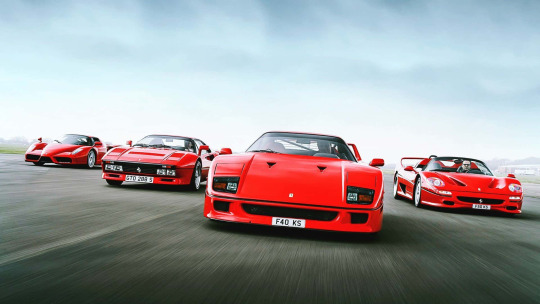
And the JPE was simply the greatest Seven ever - the most raw, thrilling, pure automotive experience the streets had ever witnessed. If driving a fast car was like biking down a hill, the Seven JPE was skydiving. Hell, it was the cover car of éX-Driver, an anime about a team using old-school sportscars to rescue haywire autonomous vehicles!
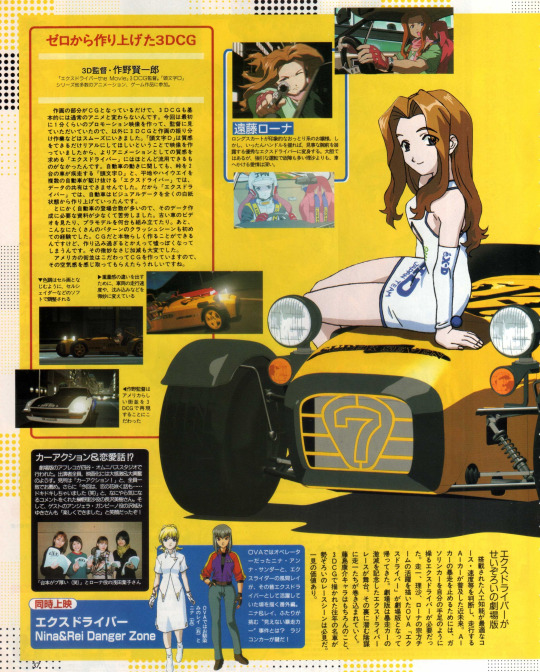
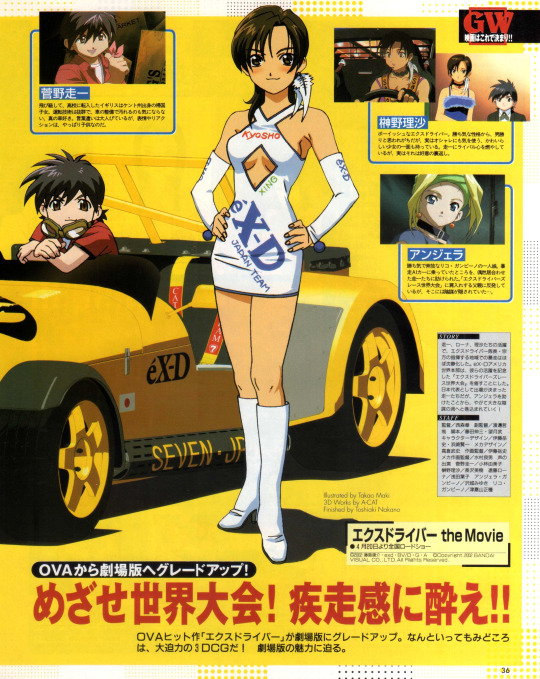
Not that culturally relevant but MAN was it cool as a kid. I need to hang those damn posters one of these days. I was saying.
These are three success stories in three radically different ways. Because, as much as I've made this post all about the numbers, sometimes it's not about that. Sometimes it's about making a show, leaving a mark, being spectacular. Sometimes it's about pushing yourself to achievements you can take pride and inspiration from. Sometimes it's simply about having fun seeing just how far you can really go. Sometimes it's about deciding what you want to be and make a new favorite version of yourself, that is the best it can be at what you care the most about. And for some that may result in less popularity or success or impact or legacy than others, but those are just some of the things you can work towards. It can be okay to just work towards having a blast. Hell, those madmen at Caterham used to stay after work to build themselves track cars, race them the next day and put ‘em back in the workshop after racing them, and the company survived to this day. Because, yes, they're still around - and their new lineup topper gets to 100 in 2.8. Windshield still optional. Well, at least there's headrests now. And a wider version, for the concrete possibility that you physically don't fit.
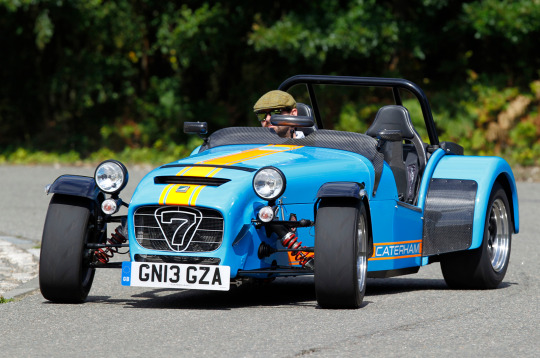
Never change, Caterham, because you certainly never have.
Links in blue are posts of mine explaining the words in question - if you liked this post, you might like those!
#this was meant to also celebrate 300 followers#i am just that slow at writing stuff#porsche 356#porsche 911#porsche 959 s#ferrari 288 evoluzione#ferrari f40#lotus seven#caterham seven jpe#vauxhall cavalier gsi#round numbers
45 notes
·
View notes
Text
Febuwhump #28 No...Not Like This
Jim makes it in time. Barely.
It's almost worse this way. This way, he can imagine the things he might have done faster, just a few seconds and he could have been the one in the reactor chamber.
He doesn't condemn Spock his choice. He loves him for exactly this choice. He would have done the same. It is in neither of them to sacrifice old friends and children.
But it's his ship and it should be his sacrifice. (It is of course, Spock has the easy bit).
He's sent Spock into danger, sent him to his death - more than once. He'd only survived by the grace of whatever deity watches over foolish Starship captains and ridiculous Vulcans. But he'd done it because he'd had to, because there hadn't been any other choice.
Because it is not who either of them are to let others die in their stead.
But this. He could've done this. He could've made this choice. There is no need for Spock to do it...except that he'd been too slow, too stupid, and this will be the price of his old man's reflexes.
All those other times, all those planets and battles and space phenomena...
If Spock were dead, he could mourn him. He could shut down and be Captain Kirk. He could drink with McCoy. He could fight with Scotty. (He's done both before, they'd forgive him. He can impose on their friendship and loyalty that far.)
Instead, all he can do is watch. Watch his best friend, his first officer, his t'hy'la as he stumbles. Worn thin by radiation, blind. He picks his way to him by what must be psychic feeling and Jim reaches out everything he has to help him.
Several decades of practice let him see Spock's unease and pain.
He can't touch him, can't ease him down as Spock slides and falls more than sits.
Jim presses himself fully against the wall, straining with everything he is for Spock to take from him - his strength, his life, his-
The transparent aluminium between them is the cruellest barrier. Jim adores every inch of his Silver Lady, but now he wants to batter her apart for keeping him from the one being he values even more than her.
"The ship," Spock rasps, "out of danger?"
Jim's heart cracks anew. The worst is not the impassable partition, nor the fraying bond he can already feel unravelling in the corners of his mind as Spock's self dims. The worst is that this was inevitable.
It just shouldn't have been like this.
#my writing#febuwhump#whump#whump prompts#the wrath of khan#star trek tos#star trek original series movies#james kirk#spock#kirk/spock#space husbands#established relationship#t'hy'la#main character death#he walks it off though
18 notes
·
View notes
Text
Japan launched world’s first wooden satellite into space
Japanese engineers launched the world’s first wooden satellite called LignoSat into space on Tuesday.
The miniature object was developed by scientists from Kyoto University and Sumitomo Forestry. It will be delivered to the International Space Station (ISS) and then placed in orbit at an altitude of about 400 kilometres above earth.
The name LignoSat comes from the Latin word lignum, which means “wood.” The palm-sized satellite is made of honoka, a special variety of magnolia wood traditionally used in Japan to create sword sheaths. This wood was chosen for a reason: according to the results of a ten-month experiment on the ISS, honoka wood proved to be the most suitable for space conditions.
The satellite was assembled without glue and screws using traditional Japanese technology. On board the LignoSat are sensors that will record how the wood reacts to space conditions. The satellite will encounter drastic temperature changes from -100 to 100 °C every 45 minutes as it moves from shadow to sunlight. Scientists also want to test wood’s ability to reduce the effects of space radiation on semiconductors, which could open up new prospects for space data centres. The Onglaisat satellite was launched into space on Tuesday from Cape Canaveral, Florida, US, aboard a SpaceX Falcon 9 rocket, Taiwan’s space agency said.
In space, wood proves to be a more reliable material than on Earth. There is no water or oxygen there to cause the material to rot or catch fire. Moreover, wood can be a valuable resource for building bases on other planets.
In addition, satellites made of wood would help reduce the amount of space debris. When a satellite completes its mission, it would simply burn up in the atmosphere, leaving no polluting particles behind, as happens with metal satellites, which produce aluminium oxide on re-entry.
Astronaut and university employee Takao Doi said:
If we can prove that our first wooden satellite works, we will offer it to Ilon Musk’s SpaceX.
Read more HERE

#world news#news#world politics#japan#japan news#japanese news#japanese politics#satellite#international space station#kyoto university#space#space x#falcon 9#woods
2 notes
·
View notes
Text

Father how dare you not putting my blanky on top of your clothes, shame!
(The towels be there bc I don't want his toe beans to get caught on the radiator and I didn't order enough of the aluminium to Cover it properly cvyhdvyhdv)
2 notes
·
View notes
Text
2024 Honda CB650R
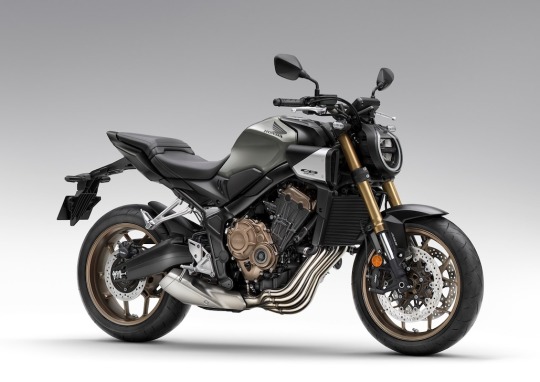

For 24YM Honda’s naked four-cylinder jewel evolves its Neo Sports Café style with a sharp styling update from nose to tail. A brand-new 5-inch TFT screen offers Honda RoadSync connectivity, operated by simplified new 4-way toggle switch. Engine performance is unchanged at 70kW power and 63Nm torque, with an A2 option. The CB650R - alongside the CBR650R super sports bike - will be the first Honda to be offered with the option of Honda E-Clutch technology, which gives the rider choice of automatic clutch operation by simply using the shift pedal. Chassis specification includes Showa SFF-BP USD forks, dual four-piston radial mount front calipers and 120/70-ZR17 and 180/55-ZR17 tyre combination. Two brand-new paint options and two new colour combinations strike a contemporary chord.
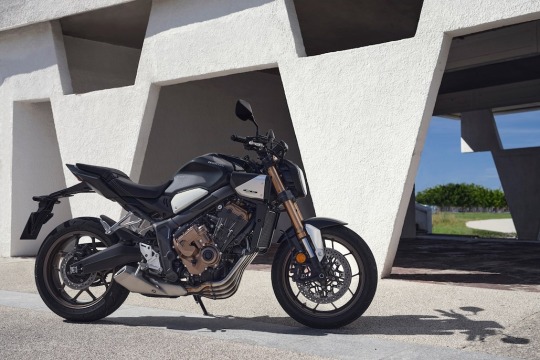
- Introduction Honda has always thrived on exploring new boundaries – in design as well as engineering. In 18YM, the CB1000R, CB300R and CB125R brought a fresh identity to its naked motorcycle line-up, mixing café racer inspirations with a forward-looking ultra-minimalist look under the ‘Neo Sports Café’ design theme. In 19YM the CB650R joined the family and its combination of cool styling, exhilarating four-cylinder engine performance and light, versatile handling ensured immediate sales success. Building on the momentum, for 21YM it received a major front suspension upgrade, plus a range of detail improvements to enhance comfort, usability and practicality. 24YM is an important year for the CB650R and while updated style and functionality will get attention, this bike – alongside its naked sibling, the CBR650R – will go down in history as the first Honda to be available with Honda E-Clutch technology, which is designed to make motorcycling, from beginner right through to expert, even more enjoyable – and even more exciting. Valerio Aiello, of Honda’s Rome R&D Department on the Neo Sports Café design aesthetic: “The entire current Neo Sport Café range from Honda is the result of the CB4 Concept model presented at EICMA in 2015. Our desire was to explore the world of the café racer and reinterpret it in a modern key. We wanted to create neo-classics – that is, modern motorcycles showcasing classic design styles combined with modern techniques. I used inspiration from outside the world of motorcycles, in watches. I’ve always liked their technicality and one of the key concepts used during the Neo Sports Café design was 'Mechanical Art'. This is the desire to show the beauty of the various mechanical elements to which Honda has always given great importance.”

- Model Overview There’s a fresh look to the CB650R’s retro minimalism. A new headlight, radiator shrouds, rider/pillion seat, tail unit and taillight inject a more dynamic energy, while the fuel tank remains a strong presence above the beautiful inline four-cylinder engine. A new 5-inch full colour TFT screen is designed for readability on bright days and features Honda RoadSync connectivity. Managed by a new, easy-to-use 4-way lefthand backlit toggle switch the rider can now enjoy on-screen, turn-by-turn navigation in addition to other smartphone features. Performance is unchanged: 70kw peak power with 63Nm are fun figures for a naked bike, and the classic in-line 4 cylinder ‘pick-up’ and high-revving top end power are longstanding Honda calling cards. A 35kW option is available for A2 licence holders. Available as an option on the CB650R, the new Honda E-Clutch takes away the need for the rider to use the clutch lever to make a shift either up or down the gearbox. The chassis is as before and a perfect package from city block to twisting back road. A steel diamond frame provides core rigidity while 41mm Showa SFF-BP USD front forks and Showa rear shock deliver high-quality suspension control. Four-piston radial-mount front brake calipers work 310mm floating discs and cast aluminium wheels mount 120/70-ZR17 and 180/55-ZR17 front and rear tyres. The 24YM CB650R will be available in the following colour options: **NEW** Matt Laurel Green Metallic with Matt Vulcan Silver Metallic details **NEW** Pearl Smokey Gray, with Matt Crypton Silver Metallic details Candy Chromosphere Red with NEW Matt Crypton Silver Metallic details Matt Gunpowder Black Metallic with NEW Matt Crypton Silver Metallic details
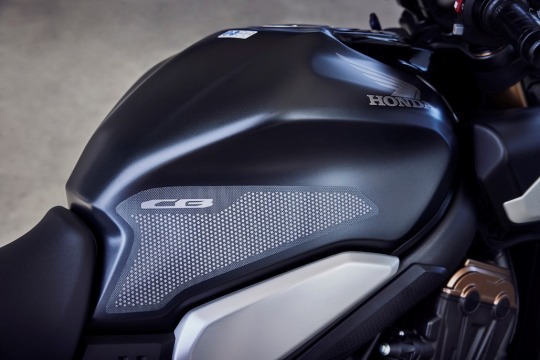
- Key Features 3.1 Styling & Equipment - Neo Sports Café styling evolves dynamically - New 5-inch full colour TFT screen includes Honda RoadSync connectivity for on-screen turn-by-turn navigation and access to other smartphone functions - New, simplified left hand switchgear easy to use and backlit for night-time - All lighting LED; new slanted headlight matched by new taillight design Tightly wrapped, the CB650R’s Neo Sports Café style evolution features the signature compact ‘Trapezoid’ proportion of a new, sharper tail and short-overhang and new slanted LED headlight All other lighting is LED, and a new taillight tucks seamlessly into the new fairing. From the front, via the new radiator shrouds backwards, the overall look is sinuous, more dynamic and with keen sense of purpose. The long fuel tank remains a key motif of the family design; its smooth lines accentuate the solidity of real metal surfaces and crown the engineering of the four-cylinder powerplant. It also houses the ignition. A 35° handlebar angle makes tight, slow-speed turns and U-turns straightforward. The shape of the pillion and rider seats have been revised to match the new tail; seat height remains 810mm. There’s a USB Type-C socket located under the seat. Premium technology – in the form of a brand new, 5-inch full colour TFT screen – uses optical bonding to improve visibility in bright sunlight. By sealing the gap between the cover glass and TFT screen with resin, glare is reduced, and visibility improved. The display itself is customisable between ‘Bar’, ‘Circle’ and ‘Simple’ display patterns and also, for the first time on the CB650R, offers the smartphone connectivity of Honda RoadSync. Honda RoadSync – alongside a new simplified, easy-to-use, backlit 4-way toggle-switch on the left handlebar – allows straightforward, on-screen turn-by-turn navigation as well as the option (via a Bluetooth helmet headset) for the rider to make calls, listen to music or receive voice feedback of weather conditions. All an owner has to do is download the free Honda RoadSync app from either the Play Store or the App Store, connect to the CB650R, and go.
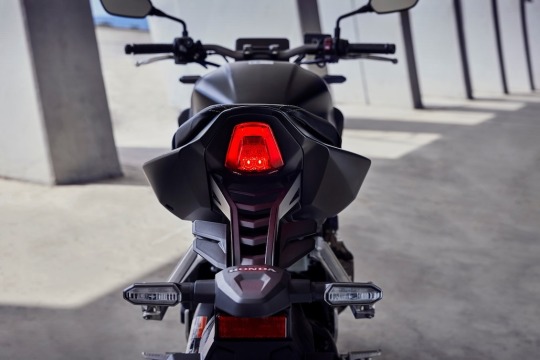
3.2 Chassis - 41mm Showa Separate Function Big Piston (SFF-BP) USD forks - Four-piston, radial-mount front brake calipers and floating discs - 120/70-ZR17 and 180/55-ZR17 front and rear tyres The steel diamond frame uses pressed swingarm pivot plates and twin elliptical spars with a rigidity balance specifically tuned (stiffer around the headstock and more flexible in the spar sections) to deliver excellent all-round handling characteristics with high levels of rider feedback. Rake is set at 25.5° with trail of 100mm and wheelbase of 1,450mm. Kerb weight is 205kg (207kg E-Clutch). Showa’s 41mm Separate Function Big Piston (SFF-BP) USD forks offer high-quality reaction. A pressure separation damper in one fork tube and spring mechanism in the other deliver high damping performance and lighter weight. Together with the use of a larger sized piston, the result is increased feel, bump absorption and control. Adjustable for 10-stage spring preload, the single-tube monoshock operates directly on the curvaceous gravity die-cast aluminium swingarm. Four-piston radial-mount front brake calipers work 310mm floating discs, and are paired with a single-piston rear caliper and 240mm disc. The ABS is a two-channel system. Cast aluminium wheels mount 120/70-ZR17 and 180/55-ZR17 front and rear tyres.

3.3 Engine - 70kW peak power with 63Nm peak torque - 35kW A2 licence option available - Honda Selectable Torque Control (HSTC) The 649cc, DOHC 16-valve engine is unchanged for 24YM. It’s tuned to create the purest, most enjoyable mid-sized four-cylinder performance possible, with the classically fast ‘pick-up’ through the rev range and hard-hitting, high-revving top end for which Honda’s in-line fours are renowned. Peak power of 70kW arrives @ 12,000rpm with peak torque @ 63Nm delivered at 9,500 rpm. A 35kW option is available for A2 licence holders. Direct cam actuation makes for a compact cylinder head; bore and stroke is set at 67mm x 46mm with compression ratio raised of 11.6:1. Iridium spark plugs are employed and twin air ducts – either side of the fuel tank – feed the airbox and produce a throaty intake roar. Asymmetric piston skirts minimise bore contact and reduce friction. Ferrous spines on the outer surface of the cylinder sleeves reduce oil consumption (and friction) with improved heat transfer and a silent SV cam chain reduces frictional losses by using a Vanadium coating on its pins. Internal water channelling from cylinder head to cylinders does away with most of the exterior hoses. The engine uses a compact internal architecture, stacked six-speed gearbox and starter layout with the cylinders canted forward 30°. An assist/slipper clutch eases upshifts while managing rear-wheel lock up under hard braking and rapid downshifts. Honda Selectable Torque Control (HSTC) manages rear wheel traction; it can be turned off should the rider choose. Fuel consumption of 20.4km/l (WMTC mode) gives a range of over 300km from the 15.4L fuel tank. EURO5 compliant, environmental efficiency has been updated with revisions to the ECU and catalyser, as well as the addition of an OBD2-2 sensor.

- Honda E-Clutch - see separate post - World-first technology allows the rider to start, stop and change gear without using the clutch lever – just the shift pedal - Available as an option from new; system adds 2kg to kerb weight - Honda E-Clutch also allows normal operation of the clutch lever - Brings more enjoyment and flexibility across a wide range of scenarios, for a ‘next level’ riding experience Honda E-Clutch takes elements of the technology and performance of quickshifters, manually-operated clutches and Honda’s Dual Clutch Transmission technology to create a unique blend of these well-proven approaches, opening up a whole new aspect of the motorcycling experience for riders of every type and experience level. The clutch and transmission hardware themselves are no different from a conventional motorcycle, with the ultra-compact system weighing only 2 kilograms. In operation, Honda E-clutch is simplicity itself, taking away the need to use the clutch lever to make a shift either up or down the gearbox. The rider simply has to operate the shift pedal for ultra-fast, consistent gear changes, bringing extra enjoyment to sporty riding. The clutch lever is also not needed when pulling away or coming to a stop. Becoming active as soon as the engine is switched on, the system manages both scenarios smoothly, while taking away the possibility of the engine stalling when in operation, providing extra convenience and peace of mind to town riding involving frequent starts and stops.

In addition to enjoyment and convenience, Honda E-Clutch brings ultimate flexibility. Should the rider wish, they are able to operate the clutch lever as normal at any time. When the clutch lever is used, the Honda E-clutch system will re-activate after less than a second above a certain engine rpm; after 5 seconds at lower engine speeds. Should the rider wish to turn off the system for a particular ride, this is also possible via the switchgear on the left handlebar. The change to manual operation is indicated by a letter ‘M’ on the instrument panel. The Honda E-Clutch also allows the rider to select an ‘operation feel’ to set the strength of the force required on the shift pedal to make a gear change. Three settings are available: HARD, MEDIUM, and SOFT, each of which can be chosen independently for upshifting and downshifting. The technology will also advise the rider to shift down - via a symbol on the instrument panel - if it detects the motorcycle is in a high gear at a certain speed. The Honda E-Clutch manages clutch engagement and disengagement based on its reading of parameters including vehicle speed, throttle opening angle, engine rpm, pressure on the shift pedal, clutch motor reduction gear angle, engine countershaft speed and gear position. The clutch is operated through an actuator unit with two motors situated inside the right hand engine cover. As the clutch is engaged or disengaged, the engine’s ignition timing and fuel injection are also controlled, resulting in smooth, shock-free shifting in any situation. Junya Ono, Large Project Leader, Honda E-Clutch: “Our Honda E-Clutch is designed to offer motorcyclists a new kind of experience that can make their riding even more fun and exciting. It also adds peace of mind and comfort to town riding or the daily commute. We hope that many riders will try our new system to enjoy the unique mix of sportiness and flexibility it offers.”
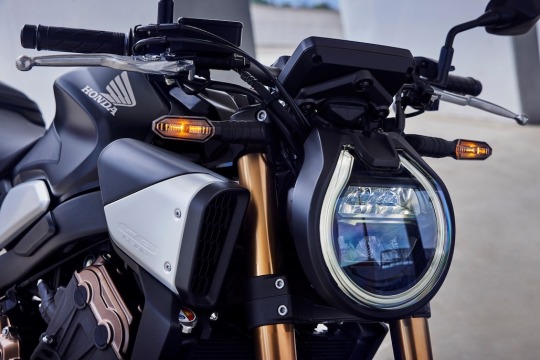
- Accessories A range of Genuine Honda Accessories are available for the CB650R, both available as individual items and grouped in packs, and are ready to bolt straight on: Style Pack Designed to complement the looks and style of the CB650R by adding high-quality aluminium inserts, Front Fender Panels, Radiator Shroud Covers, Side Cover Panels and Tank Side Stickers for added grip and protection. A red adonised Oil Level Gauge featuring the Honda logo adds a touch of colour and contrast. Sport Pack Pumps up dynamism with a Quickshifter (for non E-Clutch model), instrument Flyscreen for added wind protection, a Pillion Seat Cover featuring a dedicated aluminium plate, an Under Cowl that enhances the sporty appearance and finally, a Tank Pad that adds practical protection. Comfort Pack Cold weather rideability is improved with the addition of 5 stage Heated Grips with a memory function, plus the flexible, easy-to-attach carrying capacity of a Tank Bag with a see-through pocket for smartphones and an expandable 17L Rear Seat Bag that can be increased to 22L. The line-up is completed with Wheel Stripes available in different colours. All the accessories featured in packs can also be purchased individually. - Technical Specifications ENGINE Type Liquid-cooled 4-stroke 16-valve DOHC inline-4 cylinder Engine Displacement (cm³) 649cc Bore ´ Stroke (mm) 67.0 x 46.0 Compression Ratio 11.6:1 Max. Power Output 70kW/12,000rpm Max. Torque 63Nm/9,500rpm Oil Capacity 2.7L Noise Level (dB) Lwot – 78.8, Lurban – 74.2 FUEL SYSTEM Carburation PGM-FI electronic fuel injection Fuel Tank Capacity 15.4L Fuel Consumption 20.4km/litre ELECTRICAL SYSTEM Starter Electric Battery Capacity 12V/8.6AH ACG Output 380W DRIVETRAIN Clutch Type Wet, multiplate disc Transmission Type 6-speed Final Drive Chain FRAME Type Steel diamond CHASSIS Dimensions (LxWxH) 2130 x 780 x 1075mm Wheelbase 1450mm Caster Angle 25.5° Trail 100mm Seat Height 810mm Ground Clearance 150mm Kerb Weight 205kg 207kg E-Clutch Turning radius 2.8m SUSPENSION Type Front 41mm Showa Separate Function front Fork Big Piston (SFF-BP) USD forks Type Rear Monoshock damper with 10 stage adjustable preload, 43.5mm stroke WHEELS Rim Size Front Hollow section 6-spoke cast aluminium Rim Size Rear Hollow section 6-spoke cast aluminium Tyres Front 120/70ZR17 M/C (58W) Tyres Rear 180/55ZR17 M/C (73W) BRAKES ABS System Type 2 channel; hydraulic dual disc 310mm front, hydraulic disc 240mm rear INSTRUMENTS & ELECTRICS Instruments Digital speedometer, digital bar graph tachometer, dual trip meter, digital bar graph fuel gauge, gear position and upshift indicator, digital clock Headlight LED Taillight LED # Please note that the figures provided are results obtained by Honda under standardised testing conditions prescribed by WMTC. Tests are conducted on a rolling road using a standard version of the vehicle with only one rider and no additional optional equipment. Actual fuel consumption may vary depending on how you ride, how you maintain your vehicle, weather, road conditions, tire pressure, installation of accessories, cargo, rider and passenger weight, and other factors. Read the full article
5 notes
·
View notes
Note
i remember hearing about solar panels that work at night by capturing infrared radiation from the earth or something. no clue if they actually work. however even if they do work… don’t solar panels also require a shitton of mining. wind turbines are super non-recyclable. hydro has frequently displaced people due to damming rivers. nothing is perfect and it’s naive to act like anything is
yeah iirc solar panels use a lot of silver and aluminium, the mining of which--and please, hold the gasps of surprise--has caused massive amounts of suffering to indigenous people in south america and australia. there is no expansion of industry under global capitalism that will not concentrate suffering and damage in the most marginalized communities of the global south. and yet by not choosing, by refusing to advocate for nuclear power because of the harm it can cause, people who think of themselves as environmentally conscious are tacitly advocating to continue fossil fuel extraction and usage, which is measurably, by any conceivable metric, far, far worse. sad!
40 notes
·
View notes
Photo
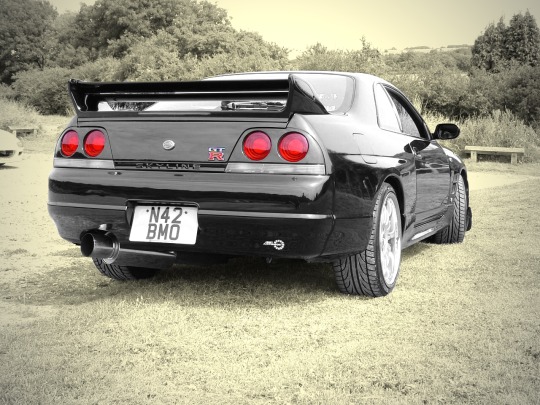
Back in a former life, I had an addiction that I loved beyond sanity. Here’s the story of it. 2002 2003 2004 2005 2006 2007 2008 2009 pt1 2009 pt2 2009 Redux
This is the final spec list for my glorious, insane Brutal Truth.
Nissan Skyline BCNR33 GT-R (Type 2) manufactured in April 1996. JDM non V-Spec vehicle retailed through Osaka Nissan Prince in May/June 1996. Imported to the UK in June 1997. Remained in original JDM spec without speedometer conversion until August 2002. Only the steering wheel & white dial sets were fitted in Japan.
Nismo RB26N1 bare engine: [N1 water pump (improved flow & less cavitation)/Reinforced cylinder block head bolt boss/Increased sump capacity (6L 20w60)/1.2mm oil restrictor]
N1 head with 0.5mm overbore (2598cc)
Cryogenically hardened N1 crankshaft
Wossner forged & cryogenically hardened pistons
Abbey Motorsport reinforced & cryogenically hardened con-rods
ACL Race Series conrod & crankshaft bearings
Tomei sump baffle kit
Tomei high flow (larger drive gears) oil pump
HKS 1.2mm metal head gasket
Tomei Procam Spec 2 cam kit (270 degree inlet & outlet with 10.25mm lift)
HKS V-Cam System Step 1 Type B (variable 248-278 degree inlet; replaces Procam inlet camshaft)
HKS vernier cam pulleys
HKS kevlar reinforced timing belt
Trust metal intake & throttle gaskets
HKS front pipe & decat gaskets
GReddy Iridium 08 Racing sparkplugs
Mocal 19-row oil cooler & Abbey Motorsport remote oil filter assembly
Abbey Motorsport catch tank & washer reservoir with SFS breather hoses
Abbey Motorsport Pro Alloy large radiator
Tomei fuel pump, fuel regulator & 600cc injectors
A’PEXi Power Intake induction kit
A’PEXi GT Spec intercooler (237x610x136mm) & hard pipe kit
HKS GT-SS turbos
HKS twin AFM delete kit
Tomei turbo elbows
HKS downpipes
HKS Silent Hi-Power exhaust
Abbey Motorsport 80mm decat pipe
Mine’s VX-ROM
HKS F-Con V Pro
HKS EVC 6 boost controller (1.6 bar)
AEM wideband lambda sensor
Splitfire DI Super Direct Ignition System
HKS Circle Earth kit
HKS GD Max twin-plate clutch (with lightened flywheel)
Abbey Motorsport rebuilt transfer box
Abbey Motorsport rebuilt gearbox with cryogenically hardened gear set, modified Nissan synchromesh upgrade and OS Giken strengthening plate
Abbey Motorsport rebuilt rear diff
Nismo gearbox mounts
Nismo Solid Shift gear stick (10% short shift)
Omex Shift Light Sequential
Sunsei SE-135 solar panel trickle charger mounted on a custom aluminium riser between the rear parcel shelf speaker enclosures.
Team Dynamics Equinox alloys 19x9.5, ET+15 in silver with polished stainless steel rim.
Falken FK452 265/30/19 Y-rated tyres
Cusco brake master cylinder brace
Cusco rear steering delete kit
Cusco front & rear upper suspension links
AST Sport Line 1 full suspension kit with UK spring setup
Nismo stainless steel braided brake hoses
StopTech 355mm rotor 4 pot caliper front brake kit
StopTech 355mm rotor 2 pot caliper rear brake kit with Abbey Motorsport modified pad retainers
Ferodo DS2500 brake pads front & rear
Bomex AD-390 front splitter
Nismo R34 smoked front indicators in custom aluminium mounting plates finished in crackle black
Nissan Xenon headlamp units
Border Racing Aero Fenders (vented front wings) with silver GT emblems from a R32 Skyline
Nismo smoked side repeaters
Top Mix one-off FRP twin blade rear spoiler on custom aluminium mounting plates
Entire exterior resprayed in BMW black (code 086) base and lacquer
Nissan Motorsport International carbon fibre B-pillar plates
PIAA carbon effect silicon wipers, front pair with spoilers, rear without
Nismo white face dial sets (dashboard & centre console) in carbon fibre panels
AEM AFR gauge mount replaces the lighter socket
HKS EVC display mounted on custom carbon fibre plate replacing the ashtray
Lighter socket relocated to the fog light switch panel
Nissan Momo steering wheel (with airbag)
Dressycar Nismo harness pads
Redline Automotive leather gearstick & handbrake gaiters
Abbey Motorsport carbon fibre door sill trims
Carbon fibre boot sill trim
Inlet plenum and sundry induction pipework finished in powder grey
Trust clear cam pulley cover
HKS Kansai Service carbon fibre spark plug cover
Right hand cam cover finished in crackle black
Nismo radiator & washer reservoir caps
HKS Kansai Service front strut brace finished in high gloss black
GReddy aluminium slam panel finished in crackle black
Tein bonnet dampers with black sleeves
Custom made one-off Cobra Misano Lux front seats: [Alcantara (colour code 9189) outers/Alcantara (colour code 9182) centre panels/One-piece carbon fibre backs/Sidewinder bases on custom subframes adapted by Abbey Motorsport/Cobra logo in silver thread on the headpads/GT-R logo beneath the grommets on seat backs]
JVC KD-AVX2 multi-media DVD/CD receiver with built-in 3.5” widescreen monitor
2x JL Audio Evolution VR600-CXi 6” speakers (front)
2x JL Audio Evolution TR650-CXi 6.5” speakers (rear)
Multiple and interlaced Thatcham rated security systems.
500 bhp. 520 ft/lb.
Ludicrously, hilariously, unbelievably fast.
Hope you enjoyed this little trip down memory lane with me. Cheers! JM.
(Photo by N. Liassides.)
#r33#bcnr33#skyline#gt-r#nissan skyline#Abbey Motorsport#HKS#Bomex#Tomei#A'PEXi#GReddy#Nismo#RB26N1#Mocal#Team Dynamics
12 notes
·
View notes
Text






The restauration of the radiator took more time than expected: So many fins were out of shape and it took at least several hours to pick out small stones and all kinds of dirt plus about seven hot water washing processes (involving orange oil and later on water with a bit of vingear essence (Caveat: aluminium parts should not be exposed for an extended time in this )). But then these radiators are no longer available as new OEM parts and the aftermarket items do not share the same quality.
#motorcycle#triumph#roadster#speed triple#595n#speed triple 955i#955i speed triple#maintenance#radiator
2 notes
·
View notes
Text
one of the cool things about dropping my laptop's processor power to ~8W is that you don't have to worry about using it on soft surfaces anymore. There's more than enough passive radiation happening through the aluminium chassis and convection off the keyboard to keep it under control.
10 notes
·
View notes